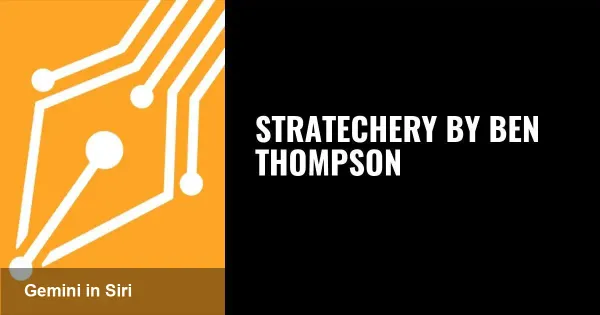Media used in Hydroponics method
Plants are grown in different mediums in place of soil in hydroponic method.

Plants are grown in different mediums in place of soil in hydroponic method. What kind of media are these? And what are its main features? And how can it be used? It is very important to know.
In hydroponics, different means are used to support the roots of the plant instead of the soil and these means provide adequate air (oxygen) and moisture to the roots of the plant so that the plant grows well. These mediums do not provide any nutrients to the plant but provide the basic need for root growth.
Thus different means used in hydroponics have the following advantages over soil.
(1) Due to the medium, no disease - pests or worms infest the plant roots.
(2) Maintains adequate moisture.
(3) Air pressure is high.
Characteristics of the Ideal Medium :
- The ideal medium retains moisture and disposes of excess water.
- The medium should not be soaked in water.
- The medium should be free from diseases and pets .
- The porosity should be good.
- Should be easily available in the market.
- Moving from one place to another.
- there should be simplicity.
- Should be light in weight
Various mediums :
(1) sand :
Sand is formed due to erosion of rocks. Its structure depends on the type of rock it is made of. Sand is cheap and can be readily available. Sand has to be disinfected before it can be used. Sand is heavy in weight. It does not hold water for long. Sand is commonly used in combination with vermiculite, perlite, and cocoa coir to help retain moisture and air circulation to plant roots.
(2) Cocopeat:
The powder that is obtained from the peeling and peeling of coconut is known as cockpit or cockodust. None of these are nutritious but they are soft and light in weight. Apart from that, Nitar Shakti is also excellent.
Under the present circumstances, greenhouse is popular as a breeding medium as it has excellent porosity (5 to 20%). It is a good medium for growth and development of dharna. It contains more than 5% lignin so that it lasts for a long time. It does not cause soil borne diseases.
(3) Vermiculite :
Magnesium aluminum is Aryan silicate. It swells when heated. And becomes fairly light in weight. So that it has enough space to store air and water. Its bearing capacity is very good. It has a neutral pH. Has a number. Is insoluble in water. Moisture storage capacity is very high. It is especially used in developed countries. It also has plenty of ketone exchange capacity and has the ability to retain nutrients for a longer period of time which it provides slowly later.
(4) Perlite :
The grayish-white silicase substance found in volcanic eruptions is known as perlite. The lava from the volcano is heated to 30 ° C in the furnace. Perlite is prepared by heating the temperature. This is a sterile medium. H digits are 3 to 5. It has high moisture holding capacity and ion exchange capacity. It does not contain any minerals and is light in weight.
(5) Roakwool :
Molten rock is spun like glass fiber to make rock wool. Such fiber is currently available in the market in the form of bricks, square pieces. Water storage and air circulation in Rockwall is very good. Rockwall is specially used in soilless cultivation. Rockvool slabs, Rockvool cubes are also available in the market, especially the cube is used for growing seeds. Rockwall is light in weight and can be reused. It provides the plants with a sterile environment.
(6) LECA-Light weight Expanded Clay Aggregate :
Hydrotone in the form of pebbles is used as an ideal medium for plant growth. Leca pebbles are very porous. This greatly increases its surface area. So that water can be stored for a long time. Leka Pebbles have good air circulation and no question of washing in water so Leka Pebbles can be used again.
(7) Gravels :
A medium like gravel is also used in aquariums. Gravel is heavy in weight, cheap in price and easily available in the market. Water evaporates quickly. Easy to clean. Gravel has to be cleaned before use. If gravel is used as a medium, it needs to be watered slowly, otherwise the roots of the plant will dry out.
(8) Growstone :
Grostone is light in weight and porous and not uniform in shape. This medium can be reused. Groston can store more air and water than perlite and peat. It contains 0.5 to 2.0% calcium carbonate. The main disadvantage of Grostone is that it is difficult to clean. The roots of the growing plant stick to the grostone so that the roots are likely to be damaged when the plant is moved to another medium or elsewhere.
(9) Oasis cubes :
This medium is similar to Rockvool Cube but cannot store water like Rockvool Cube. This medium is cheaper in price. Oasis cubes are useful for seed germination and plant growth. Oasis cubes can absorb water and have a high circulation of air. The growth of plant roots is also good in this medium.
(10) Pumice :
Lightweight and perlite-like medium Pumice consists mainly of silicon dioxide and aluminum oxide. It also contains various amounts of iron, calcium, magnesium and sodium in oxide form. This medium is useful in disposing of excess air and excess water. Pumice maintains a high oxygen content.
(11) River Rock :
River rock is cheap in price and heavy in weight and is available in different sizes in the market. They are spherical and have smooth edges. They need to be sterilized before using Revok as a medium. River rocks are not porous so they do not retain moisture in the root zone of the plant. Since the rocks are of different sizes, the space between the two rocks allows more air to circulate, which gives the roots more oxygen. The water in the river rock drains quickly so the interval between two waterings should be adjusted so that the plant roots do not dry out.
(12) Floral foam :
Like the Oasis Cube, this medium can be used in hydroponics. Floral foam can easily absorb water. The disadvantage of this medium is that it can easily disintegrate and it disperses small particles in water.





